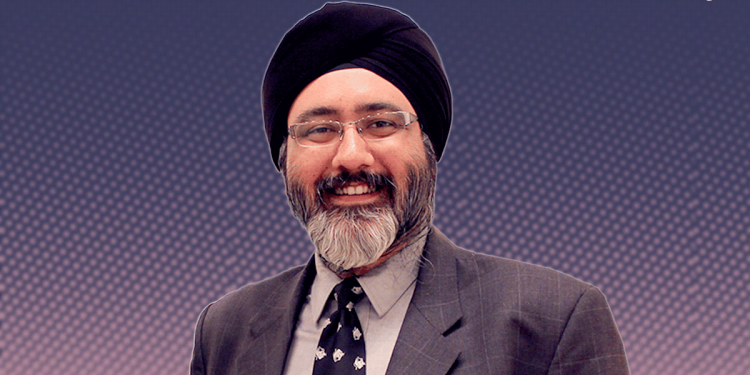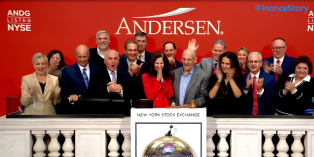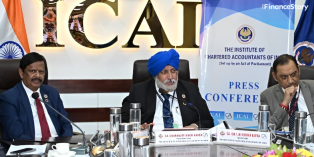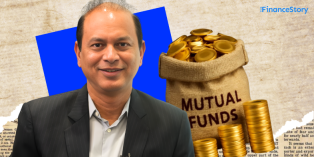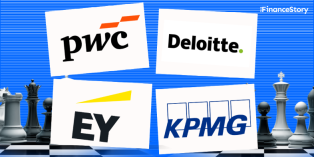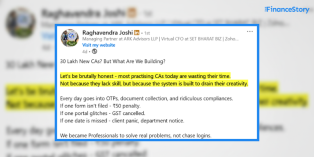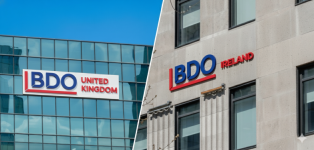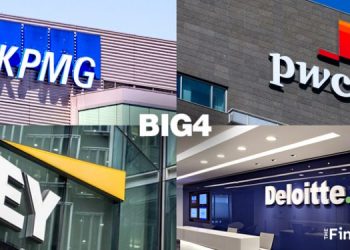- Hi, I am Rishiraj Sethi. Growing up, CA was not on my radar but I ended up pursuing the same anyway and started my career at Andersen/ EY.
- In 2008, I quit my job to join my Father and Brother to build Aura Art, in order to organize the art market and fill the gaps in the system.
- Today we cover the entire spectrum – assisting new and evolved collectors build and manage their wealth in art, with art from USD 3,000 to USD 300,000.
- Here is my story.
CA was not on the radar
While still in college, I was involved in the family’s investment activities, besides taking a keen interest in family tax compliance, I looked forward to the interaction with our family CA.
Unlike many of my friends who were studying for the CA course, I decided to pursue a Diploma in Business Finance and eventually be a part of the larger wealth management space. (I was keen to graduate and start working!)
As destiny would have it, a couple of my closest friends dragged me into a presentation by Andersen (a leading CA firm back then). As a 21-year-old, I was completely enamored and went all out to join Andersen.
I was keen to build my career with the Firm, for which CA was a pre-requisite! So with the greatest trepidation, I went on leave for my Inter-CA, and the rest as they say is history.
Forging my career path at a Big 4 Firm
Fortunately, I was able to clear the Final CA on the first attempt in 2000 and continued my career at Andersen.
Given my continued interest in the wealth side, I kept dabbling in the stock market, besides engaging with the family real estate portfolio, and simultaneously pursued CFA.
After completing my CFA (2003), I went for a couple of interviews/meetings in the wealth space but did not find a culture to suit my aspirations.
My career at Andersen was progressing well and I was on a steep learning curve, so I decided to continue.
By now Andersen India merged with EY.
Given that I had done my CFA, and had been involved in structuring and executing a couple of transactions, in 2005, I got to migrate laterally to the Investing Banking side of EY.
Later I even worked in other exciting sectors like Real Estate and Healthcare…I was on a roll!
Understanding Art from a different perspective
Over the decades, my father and brother had developed significant expertise in art – after having studied thousands of artists, built a formidable collection, and shortlisted the key artists for promotion.
As a CA, I was quite insulated from all this except the occasional annoyance of sharing the dinner table with artists at unearthly hours with their works strewn all over the house.
However, with Aura Art being envisaged in 2006, I would take time out and visit galleries, museums, and auctions (both within and outside India) and interact with various stakeholders.
This exercise was an eye-opener into the wealth potential of art.
Being an Investment Banker, I realized that my understanding of Art helped me connect better with promoters.
To add, as soon as word spread in my corporate network of my family’s interest in art, I started getting calls from EY colleagues and other professionals across the country to get pointers for client meetings (there was a sudden frenzy in the art market at that time).
As a CA and someone with a keen interest in the wealth industry, I soon recognized Art as an Asset class.
Entrepreneurial leap after an 11-year corporate stint
Fast forward to 2008, the year started on a high note, with the Aura Art launch show in January 2008. My involvement in the show, albeit limited, was very enriching.
Besides, the show was very well received by the art market.
At the same time, while Investment Banking was an exciting profile, I was beginning to feel that I was not able to add incremental value to myself.
Hence, I actively started considering setting up a vehicle to service HNIs and their advisors – with a focus on alternate assets – real estate, early-stage investing, Art, and other collectibles.
For this purpose, I met a host of professional contacts and well-wishers and the resounding advice from them was – ‘to actually leverage the family’s art strength and set up a focussed ‘Art platform’ for promoting art as well as servicing wealth needs.’
Taking all this into consideration, I moved on from EY at the age of 32 after an 11-year stint…and here started an interesting journey that is still continuing.
Building the Art business – One step at a time
In 2008, we started our journey as a venture capital company – researching artists, investing in their works, and incubating and promoting them to gradually ride the growth in value.
While the initial intent was to collaborate with other art market players, we soon realized that we will have to roll up our sleeves ourselves and organize art shows and the like to promote art.
Having done that successfully in the most testing of times, we migrated to a dealing business in 2015.
Also, given that our core model to work towards the ‘expansion of the art market’ we always believed that an online presence is vital.
Hence, in 2016, we set up www.auraart.in, as India’s leading and probably first curated online marketplace for fine art, wherein artists, galleries, dealers, and collectors sell and acquire works.
We do our best to maintain the quality of the listing – both in terms of the artist, their work as well as its attributes (data points, pricing, etc).
Gradually we introduced the Art Services Business documenting and valuing collections, valuation assistance for transactions / re-organizations/ compliance, insurance advisory, restoration, estate planning, etc.
Recently we partnered with Amazon India for the launch of its art vertical in India.
We conduct various thought leadership initiatives and talks at various forums which have ensured that we become the preferred partners for Wealth Advisors and Family Offices.
We also increased the propensity of our shows and started exhibiting across the country.
The 7-year-old partnership to set up and manage The Art Enclave at Index Fairs has assisted the participants and us in forming strong working alliances with architects and designers.
Tackling challenges
My transition from EY to a full-time Entrepreneur was quite smooth as my previous roles were very entrepreneurial.
However, the big challenge was that just within one month of formally transitioning into my new role, we had the Global Financial Crisis, in September 2008.
Imagine the impact of widespread wealth destruction on a business hinging on wealth creation.
Nothing was going to prepare me or anyone for that matter for what was to follow.
Somehow we kept going and all went fine.
The other self-imposed challenge that we faced early on was deciding not to go for any External Funding or Partnerships.
(We were approached by a prominent International auction house and later by a leader in Art Infrastructure Solutions to be their Indian Partner, even though many HNIs wanted to partner to set up a Gallery…. we had a deep conviction about our plans and ability to achieve them on our own grit and turned down several such opportunities!)
Besides these, we continue facing the routine challenges of scaling up, but the biggest challenge that drives me crazy is the extent of fakes in the art market!
Client base
Our clients can broadly be segregated into 5 categories – and are located across India as well as other parts of the world.
- Evolved collectors: Have been patronizing art for decades and have also inherited art.
- New collectors: They are now beginning their journey towards building a collection.
- Consumption buyers: Besides collection, there is also an increasing trend towards consuming more and better art. On a lighter note, while lawyers are adept at building massive art collections and displaying them with pride in their offices, CA firms are just warming up to this idea.
- Institutional Buyers: Increasingly, hotels, hospitals, corporate parks, and government establishments are becoming more conscious of the need to display quality art to liven the decor, besides reflecting the organization’s ethos. Also, there is a growing interest in large installations and sculptures, by realty developers for their projects.
- International Market: Last but not least, the increasing socio-politico-economic importance of India has led to an increase in interest in Indian art outside India (from Indians and foreigners).
Wrapping Up…
Running Aura Art for more than a decade, my sole purpose is creating a world-class institution that furthers the cause of Indian Art.
My research suggests that the Indian art market is highly under-represented and there are significant gaps in the Art ecosystem.
It is set to grow as we see more and more Indian collectors emerging (inside and outside India) as well as global collectors adding Indian art to their collections.
The art infrastructure solutions opportunity is even more interesting, particularly for CAs.
It is estimated that HNWIs hold the art of US$3 trillion and if we assume the annual cost of servicing a collection to be 1-1.5%, the addressable Global Art Infrastructure Market is pegged at $30-45 bn annually.
This is again a very nascent area in India, with huge catch-up potential.




